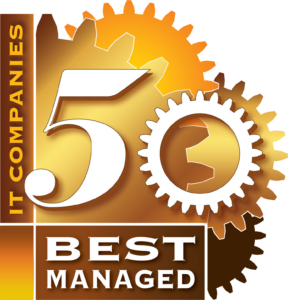
Understanding Cloud Versus On-Premise Servers for Your Business Needs
Understanding Cloud Versus On-Premise Servers for Your Business Needs
There are a few common problems or pain points that businesses experience when they’re considering a migration to the cloud versus on-premise servers.
First, “the cloud,” as a concept, is the source of a lot of confusion for people. But it’s not that complicated. Instead of a server in your office, it’s a server in somebody else’s office, probably in a data center somewhere. And when an organisation’s servers need to be upgraded, they start thinking about going to the cloud.
There’s a lot of confusion about the benefits of the cloud versus the risks. People view it as a tough decision but it doesn’t need to be. Basically, the only difference is the size of the cord that attaches your computer to your servers.
A cloud infrastructure involves running the same servers and the same software in a data firm somewhere as opposed to your office. What it comes down to are your cost and resource benefits.
Advantages of Moving Infrastructure to the Cloud
There are some obvious advantages to the cloud versus on-premise. There’s less capital outlay because you’re renting server services as opposed to purchasing them outright. And there has to be a benefit to that.
That said, some clients do the math and discover that, over a five-year period, it’s less expensive not to go to the cloud. In other situations, the benefits of a cloud migration are so obvious that even if the cost was neutral, these other benefits would make it worth the time and effort to change.
Another common concern is where the information or data actually lives. And this is related to questions like, is it stable? Is it secure? Will it run the same way I’m used to things running?
When companies are happy with how their servers work, they need assurances that the benefits of the cloud won’t sacrifice stability or security.
Shifting to Remote Work with a Cloud Environment
The shift to working from home in the last year has accelerated a lot of companies move to the cloud because of the necessity to work from anywhere.
In our office, for example, all of our workstations and resources are connected to the cloud. And if that cloud environment isn’t already established, there are some other considerations that have to take place. If your infrastructure was designed to support three remote salesmen, for example, you’ll need some adjustments to support 60 remote users.
A lot of organisations discovered that they weren’t really cloud-ready. That’s not necessarily a problem, but COVID has really accelerated a lot of executives’ longer-term thinking.
A lot of businesses have discovered there are significant advantages to having staff working remotely, depending on the industry. If you have high overhead costs for real estate or office space, you can significantly reduce the size of your office space because staff can work from home.
Oftentimes, a really robust and well-deployed cloud presence has almost no downside. You’ll have lower lease costs, fewer expenses, happier staff members, and fewer HR issues. It’s easier on people who have to juggle family concerns.
A Cloud-First Approach
As an organisation, we take a cloud-first approach now. All things being equal, we recommend going to the cloud. But some companies or industries have specialised concerns that might prevent a migration.
Certain manufacturing environments, for example, have critical response times that go down to the millisecond. It’s difficult to guarantee that same level of service from the cloud versus on-premise servers. There are hybrid cloud solutions that can move most of the infrastructure to the cloud and with a piece of infrastructure on site to support it.
You also need a very good, very stable internet connection to provide the same end-user experience. Some basic things need to be in place before we can promise the same result when you move to the cloud. And there are some industries where parts of the business are not conducive to migrating, but that’s pretty rare.
That hybrid approach where some applications go to the cloud is a good example. Today, most companies have their email in the cloud rather than an on-premise server, which wouldn’t have been the case 10 years ago.
Cloud Versus On-Premise End-User Experience
Another common discussion topic is the impact on end-user experience. And a cloud deployment that isn’t properly structured can harm the end-user experience, which kind of defeats the purpose. You lose stability if it’s not done properly.
In a nutshell, it comes down to doing your homework. What are the requirements to make this environment function in the cloud? There’s a checklist of things that need to be done. And before you get too excited, we need to be able to guarantee that the environment will give you all of the benefits and none of the downsides.
This includes basic things like checking your internet connection and your stability. You’ll need redundant internet connections because you’re relying entirely on your internet connection to keep your business functioning.
Also, what kind of speed can we expect from user interactions with applications? If you have outdated business applications, for example, they may not function well in remote environments.
How CopperTree Helps with the Cloud Versus On-Premise Question
Our responsibilities start with education. We explain what the advantages are and have a discussion with the business owner to see how he values those advantages.
It’s one thing to say, from a technological perspective, that your staff can work remotely and connect to everything. But we must tie that to an initiative and a business advantage. The fact that an employee can do something isn’t necessarily good enough for your business. We don’t want to do things just for the sake of doing them.
Education, Communication, and Results
Education and communication are essential to understanding, especially for a non-technical person. Because the best way to get an executive’s attention is to tell them how this change is going to make their business better. They don’t really care how we do a cloud migration. They want to know about the advantages and benefits for the business. And then they just hand the keys to us and say make it happen.
At the end of the migration, we loop back and explain the benefits we’re providing and the risks we’re mitigating. Ultimately, however, it comes down to peace of mind. Organisations know that they’ve got the right technology in place and a clear strategy to achieve success.

Business leaders, like everyone else with technology, just want it to work. And they want to go to sleep at night knowing that their risks are managed and that they have the right technology to drive their business forward. If you, as a business owner, can come in every day and do what you do and not deal with technology problems, that’s a success.
Migrating to the cloud, like all major changes, is not something that happens overnight. And whether you have your infrastructure on-premise or in the cloud, it shouldn’t matter as much as the end result. The big picture is still about ensuring everything just works.
To find out more about cloud versus on-premise IT solutions, click here to start a conversation with us and we’ll see what we can do to help.



